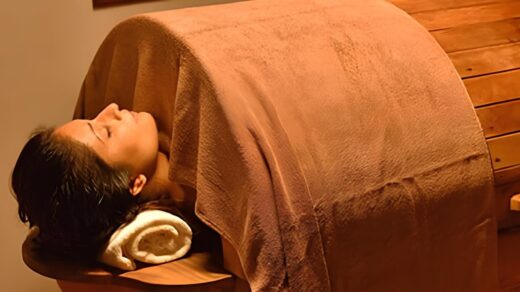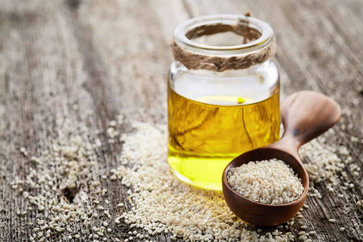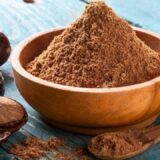Top 10 Reasons to Apply Castor Oil in Belly Button (Navel)
Castor oil is a natural vegetable oil extracted from the seeds of the Ricinus communis plant, native to tropical regions of Africa and Asia. The oil is known for its pale yellow color and has a thick consistency with a mild, distinctive odor. It is rich in ricinoleic acid, a unique fatty acid that gives castor oil its therapeutic properties.
Castor oil has been used for centuries for a wide range of medicinal, cosmetic, and industrial purposes. In traditional medicine, it’s often valued for its anti-inflammatory, antimicrobial, and analgesic (pain-relieving) properties.
Key Uses of Castor Oil:
- Skincare: Often used to treat dry skin, reduce wrinkles, and promote wound healing.
- Hair care: Used to enhance hair growth, prevent hair loss, and improve scalp health.
- Digestive health: It has natural laxative effects, often used to relieve constipation.
- Anti-inflammatory: Can be applied topically to reduce pain and swelling in joints and muscles.
Why the Belly Button Matters
The belly button is a Focal Point in Ayurveda and the Body’s Vital Systems. The belly button, also known as the navel or umbilicus, is much more than just a scar from the birth process.
In many traditional healing systems, particularly in Ayurveda, the belly button is considered a vital point of energy and is thought to be connected to the body’s core health.
Here’s an exploration of why the belly button holds such significance in both Ayurvedic philosophy and its connection to the body’s vital systems.
The Belly Button in Ayurveda
In Ayurveda, an ancient system of medicine that originated in India, the belly button is regarded as an essential focal point for health and well-being.
The practice of using the belly button in Ayurvedic therapies is deeply rooted in the belief that it is not just an external mark, but an internal gateway to the body’s core energy.
The belly button is seen as the center of the “Sushumna Nadi”, the central channel in the body through which life force (also called prana or Qi in Chinese medicine) flows.
Key Concepts in Ayurveda Related to the Belly Button:
1. Sushumna Nadi (Central Energy Channel):
The navel region is believed to be the entry point for vital energy, which flows through the Sushumna Nadi. This energy channel runs from the base of the spine to the crown of the head and is considered the path to spiritual awakening. The belly button is thought to be a key entry point for balancing and restoring this energy.
2. Marmas (Vital Points):
In Ayurveda, the body is considered to contain 108 marmas, which are points of energy that correspond to various physical and emotional states. The belly button is considered to be a significant marma point, influencing digestive health, energy levels, and even emotional balance.
3. Connection to the Digestive System:
The belly button is directly linked to the solar plexus, the area in the body where the digestive organs and major energy channels meet. This region governs digestion, assimilation, and the overall vitality of the body.
The navel’s proximity to the stomach, intestines, and liver is why it plays a crucial role in Ayurvedic healing practices aimed at promoting digestive health, detoxification, and overall wellness.
The Belly Button and the Body’s Vital Systems
The belly button’s significance is not just symbolic but also deeply physiological. It serves as the body’s center of connection between the physical and energetic worlds, which is why it is associated with the body’s vital systems—from digestion to energy flow.
1. Digestive System:
The digestive system is central to Ayurvedic health practices. Ayurveda places great importance on the Agni (digestive fire), and the belly button is thought to be the seat of Agni.
A balanced Agni ensures proper digestion, metabolism, and nutrient absorption, which in turn influences the body’s vitality.
Castor oil, when applied to the navel area, is believed to directly stimulate this energy, helping to balance digestive processes and alleviate problems like constipation, bloating, or indigestion.
2. Nervous System and the Solar Plexus:
The solar plexus, located just beneath the ribs and near the navel, is a critical center for the nervous system. It is sometimes referred to as the “powerhouse” of the body because it controls vital functions like heart rate, blood pressure, and digestive actions.
In Ayurveda, the belly button is seen as a channel through which energy can flow to strengthen this system. By massaging or applying healing oils to this area, one can promote better functioning of the autonomic nervous system and improve overall energy levels.
3. Circulatory System and Detoxification:
Ayurveda emphasizes the importance of detoxifying the body regularly. The belly button area is thought to be connected to the body’s detox pathways, including the lymphatic system and blood circulation.
Applying oils or doing practices like abhyanga (oil massage) to the navel area is believed to promote circulation, assist in the elimination of toxins, and reduce bloating or water retention. The belly button is seen as an entry point for these detoxification processes, helping to facilitate a healthy, balanced body.
4. Hormonal Balance and Reproductive Health:
Ayurveda also links the belly button to reproductive health. The navel area is associated with the Svadhisthana chakra, also known as the sacral chakra, which governs creativity, emotions, and sexual energy.
In women, the belly button area is thought to be connected to the reproductive organs, and some Ayurvedic practices suggest that applying nourishing oils or herbs to the navel can help balance hormones and relieve menstrual discomfort or other reproductive health issues.
The belief is that the belly button can help harmonize the energy of the body’s hormonal system, promoting balance in the menstrual cycle and supporting fertility.
Top 10 Benefits of Applying Castor Oil in Belly Button
Applying castor oil to the belly button has gained popularity in alternative and holistic health practices, particularly in Ayurvedic medicine and wellness circles.
While the scientific evidence supporting some of these claims is limited, many people report positive outcomes from this practice. Here are 10 potential benefits of applying castor oil to the belly button:
1. Supports Digestive Health
Castor oil is known for its ability to promote digestion. When applied to the belly button, it is believed to help stimulate the digestive fire (Agni) in Ayurvedic medicine, which can improve digestion, alleviate constipation, and reduce bloating. The oil is thought to have a soothing effect on the gut and intestines, promoting smoother bowel movements.
2. Relieves Constipation
One of the most well-known benefits of castor oil is its ability to act as a natural laxative. By massaging castor oil into the belly button, some believe it can stimulate bowel movements and ease constipation, providing relief without the need for harsh chemical laxatives.
3. Promotes Detoxification
Castor oil is often used in detoxification therapies because of its purging effects. It is believed that applying castor oil to the belly button can help activate the lymphatic system, boost circulation, and facilitate the removal of toxins from the body, aiding in overall detoxification.
4. Reduces Belly Bloat and Gas
Many people use castor oil as a remedy for digestive discomfort, including bloating and gas. When applied to the belly button, castor oil is thought to help reduce abdominal bloating by soothing the digestive system, alleviating trapped gas, and improving the flow of digestive juices.
5. Enhances Skin Health
Castor oil is rich in ricinoleic acid, a fatty acid that has anti-inflammatory and moisturizing properties. Applying it to the belly button can help improve the texture and appearance of the skin around the abdomen. It may also help reduce stretch marks, scars, and dryness in the skin near the belly button area.
6. Relieves Menstrual Cramps
In Ayurvedic practices, the belly button is connected to the reproductive system, particularly in women. Applying castor oil to the belly button can help soothe menstrual cramps by promoting better circulation to the lower abdomen and relaxing the muscles. It’s a gentle, natural remedy for those who experience pain during their menstrual cycle.
7. Balances Hormonal Health
Some believe that castor oil applied to the belly button can help balance hormones, especially in women. This is particularly true for regulating the menstrual cycle and managing symptoms of PCOS (polycystic ovary syndrome), as the belly button is thought to be connected to the sacral chakra, which governs reproductive health and hormonal balance.
8. Boosts Immune System
Castor oil is thought to stimulate the lymphatic system, which plays a crucial role in detoxification and immune function. By improving lymphatic drainage, applying castor oil to the belly button may help support the body’s immune system and promote overall health and vitality.
9. Eases Stomach Pain and Discomfort
Castor oil has anti-inflammatory and analgesic (pain-relieving) properties that can help soothe various types of abdominal discomfort. Whether you have a stomach ache, gastritis, or general discomfort, massaging castor oil into the belly button area may help alleviate pain and reduce inflammation in the stomach and intestines.
10. Improves Energy and Vitality
In holistic health, the belly button is considered the center of the body’s energy flow. Applying castor oil to this area is thought to stimulate and balance the body’s energy channels (nadis), promoting greater vitality, mental clarity, and overall well-being. Some believe it can help boost energy levels and improve focus by revitalizing the central energy points in the body.
How to Use Castor Oil on the Belly Button
Applying castor oil to the belly button is a simple process that can offer several health benefits. Whether you’re looking to improve digestion, soothe abdominal discomfort, or support skin health, this practice is easy to incorporate into your wellness routine. Here’s a step-by-step guide on how to apply castor oil to the belly button effectively:
Step-by-Step Application Guide:
1. Gather Your Materials
- Castor oil (pure, cold-pressed, and organic if possible)
- A clean washcloth or cotton pad (optional)
- A towel or absorbent cloth (if you want to leave it on overnight)
- A small bowl or container (optional, to warm the oil)
2. Clean the Area
- Wash your belly button area with warm water and mild soap to remove any dirt, oils, or residue. Pat the area dry with a towel or tissue.
3. Warm the Castor Oil
- Warm the oil slightly to enhance its absorption and make it more soothing. You can do this by placing a small amount of castor oil in a bowl and immersing the bowl in warm water (never heat it in the microwave, as it can become too hot).
- Tip: Aim for a comfortable, lukewarm temperature—too hot or cold oil can irritate the skin.
4. Apply the Castor Oil to the Belly Button
- Use your fingers or a cotton ball to apply a few drops (about 3-5 drops) of the warm castor oil directly onto your belly button.
- Gently massage the oil into the area in small circular motions. This not only helps the oil absorb better but can also stimulate circulation in the region.
5. Massage the Surrounding Area (Optional)
- If desired, extend the massage to the surrounding abdomen and lower stomach area. This may help with issues like bloating, indigestion, or discomfort in the intestines. Applying gentle pressure with your fingertips can also assist in promoting digestion and relieving tension.
6. Leave the Oil on
- You can leave the castor oil on for 15-20 minutes for a quick treatment, or overnight for more intensive benefits. If you plan to leave it on overnight, consider covering your belly button with a clean cloth or bandage to prevent staining your clothes and bedding.
7. Clean Up (If necessary)
- After the oil has been absorbed, or after your treatment period, you may choose to wipe off any excess oil using a washcloth or cotton pad.
- If you leave it on overnight, gently remove any remaining oil in the morning using a warm washcloth.
Best Time to Apply Castor Oil on the Belly Button
To get the most benefit from applying castor oil to your belly button, the timing of the application can be important:
Before Bedtime (Ideal for Overnight Treatment):
- Overnight application allows the oil to work deeply as you rest, and you can wake up with improved results. This is particularly beneficial for promoting digestion, reducing bloating, or aiding in detoxification. Your body is naturally in a more relaxed state at night, allowing the castor oil to absorb and act more effectively.
In the Morning (After Waking Up):
- If you prefer not to leave castor oil on overnight, you can apply it in the morning before eating or drinking. This can help kickstart your digestion for the day. After 15-20 minutes, you can wash it off and proceed with your regular routine.
Before Meals (If Addressing Digestive Issues):
- If you’re using castor oil for digestive health (e.g., to alleviate constipation or improve digestion), consider applying it before meals to stimulate digestive function and prepare your body for food. It’s believed that doing so can help stimulate the digestive system and improve the absorption of nutrients.
When You Have Abdominal Discomfort:
- If you’re using castor oil for relief from gas, bloating, or cramps, apply the oil when symptoms arise. This can provide quick soothing and alleviate discomfort in the stomach and intestines.
Choosing the Right Castor Oil
When selecting castor oil for use on your belly button (or for any other skin or health-related purposes), the quality of the oil is essential to ensure you get the full benefits.
Not all castor oils are created equal, and understanding the key factors to look for in a quality product can help you avoid low-quality oils that might not be effective or could even cause irritation. Here’s a guide to choosing the right castor oil for your needs:
Importance of Organic, Cold-Pressed Castor Oil
Organic Castor Oil: Why Choose Organic?
Organic castor oil is made from castor beans that are grown without the use of synthetic pesticides, herbicides, or fertilizers. This ensures that the oil is free from harmful chemicals and toxins that may be present in conventionally grown castor beans.
Using organic castor oil reduces your exposure to potentially harmful residues, which is especially important when applying the oil to sensitive areas like your belly button or skin.
Benefits of Organic Oil:
Organic castor oil is not only better for your skin and health, but it also tends to be more sustainably sourced. Organic farming practices focus on soil health and biodiversity, which leads to more eco-friendly production.
Cold-Pressed Castor Oil: What is Cold-Pressing?
Cold-pressing is a method of extracting oil from the castor beans without using heat or chemicals. This process preserves the oil’s natural nutrients, antioxidants, and fatty acids, which are essential for the oil’s healing properties.
Cold-pressed castor oil retains the highest quality and effectiveness, as it is not degraded by high temperatures or chemicals.
Why is Cold-Pressed Best?
When castor oil is cold-pressed, it retains its ricinoleic acid, the primary active compound responsible for its therapeutic benefits.
The cold-pressing method also preserves the oil’s anti-inflammatory and antioxidant properties, making it more effective for healing and rejuvenating the skin, improving circulation, and supporting digestive health.
Key Takeaways:
- Choose organic, cold-pressed castor oil to ensure a high-quality, pure, and chemical-free product that will be gentle and effective on your skin.
- Organic, cold-pressed castor oil is the best choice for both internal and external use, especially if you are using it for skin, digestive, or detox benefits.
Belly Button in Other Traditions:
1. Chinese Medicine:
In Chinese medicine, the abdomen (and by extension, the belly button) is regarded as the center of the body’s vital energy or Qi.
The navel is a significant point in acupuncture, where it is thought to promote energy flow and restore balance to internal organs.
The belly button is sometimes used for acupressure or other healing techniques designed to activate the body’s natural self-healing powers.
2. Shamanic Traditions:
Many shamanic cultures also view the navel as a point of spiritual connection and healing. It is often referred to as the “soul center” or the “power center.”
In some indigenous practices, healing rituals involve focusing on the belly button to restore spiritual and physical balance.
Precautions When Using Castor Oil
While castor oil has many health benefits, it’s important to approach its use with caution, particularly when applying it to sensitive areas like the belly button or using it on the skin.
Like any natural remedy, castor oil may cause reactions in some individuals, especially those with allergies or skin sensitivities. To make sure you’re using castor oil safely and effectively, here are some essential precautions and dos and don’ts to keep in mind.
Potential Allergies and Skin Sensitivity
Before using castor oil extensively, it’s important to be aware of the potential for allergic reactions or skin sensitivity. While castor oil is generally safe for most people, here are some things to consider:
Allergic Reactions:
While rare, some people may have an allergic reaction to castor oil, which could manifest as redness, itching, swelling, or rash around the area where the oil is applied.
If you have sensitive skin or a history of allergies, it’s particularly important to perform a patch test before using castor oil more extensively.
How to Do a Patch Test:
- Apply a small amount of castor oil to a small area of your skin (such as the inside of your wrist, behind your ear, or the inner elbow).
- Wait for 24 hours to see if any irritation or allergic reaction develops.
- If there’s no redness, swelling, or discomfort, it’s generally safe to use castor oil on larger areas of your body.
- If any adverse reactions occur, discontinue use immediately.
Skin Sensitivity:
- Castor oil is generally considered safe for the skin, but those with extremely sensitive skin should use it cautiously. If you have eczema, psoriasis, or other skin conditions, consult with a healthcare provider before using castor oil.
- Sensitivity to Castor Oil and Sun Exposure: While castor oil is generally safe, it can make your skin more sensitive to sunlight in some cases. If you apply castor oil to your skin, especially in areas exposed to the sun (such as the belly button), be mindful of sun exposure after application.
Dos and Don’ts When Using Castor Oil
Dos:
1. Do Perform a Patch Test:
Always perform a patch test before applying castor oil to larger areas of your body, especially if you’re using it for the first time or have sensitive skin. This ensures that you’re not allergic to the oil.
2. Do Use Pure, Organic Castor Oil:
To maximize the health benefits, always opt for pure, cold-pressed, organic castor oil. This ensures that the oil is free from harmful chemicals, pesticides, and additives that may irritate the skin.
3. Do Apply Castor Oil in Small Amounts:
A little goes a long way with castor oil. When applying it to your belly button or other areas, use a small amount (3-5 drops) and gradually increase if necessary. You don’t need to apply excessive amounts for it to be effective.
4. Do Cleanse the Area First:
Before applying castor oil to the belly button or any other skin area, ensure that the skin is clean. Wash the area with warm water and mild soap, and pat it dry. This ensures better absorption of the oil and prevents trapping dirt or bacteria under the oil.
5. Leave the Oil On for 15-20 Minutes (or Overnight):
For maximum benefits, leave castor oil on the belly button for at least 15-20 minutes. If you’re using it for more intensive treatments (e.g., digestive health or detox), you can leave it on overnight. Cover the area with a cloth or bandage if you’re leaving it on overnight to avoid staining your clothes.
6. Do Use a Carrier Oil (Optional):
If castor oil feels too thick or sticky, you can dilute it with a carrier oil like coconut oil, almond oil, or olive oil. This can also make the oil easier to apply and absorb while still maintaining its therapeutic properties.
7. Do Massage Gently:
When applying castor oil, massage the area gently. Not only does this help the oil absorb more effectively, but it also promotes better circulation and relaxation in the area you’re treating, which enhances the oil’s effects.
8. Do Consult a Doctor If Pregnant or Nursing:
While castor oil is often used as a natural remedy, pregnant or nursing women should consult a healthcare provider before using castor oil. In some cases, castor oil may be contraindicated, especially if it is used for its laxative properties.
Don’ts:
1. Don’t Apply Castor Oil to Broken or Irritated Skin:
If you have open cuts, sores, or broken skin, do not apply castor oil directly to these areas. The oil may irritate the skin further, causing pain or discomfort. Wait until the skin is healed before using castor oil.
2. Don’t Use Castor Oil if You’re Allergic:
If you experience any allergic reaction after using castor oil (such as itching, redness, or swelling), stop using it immediately and rinse the area with warm water. If the reaction persists, consult a doctor.
3. Don’t Overuse Castor Oil:
While castor oil is beneficial, overusing it can lead to skin irritation, dryness, or clogging of pores. Stick to recommended amounts (3-5 drops) and frequency (e.g., once a day or several times a week), based on your skin type and needs.
4. Don’t Use Castor Oil in Sensitive Areas Without Caution:
While castor oil is great for the skin, avoid using it too close to the eyes, mouth, or other sensitive areas unless advised by a healthcare professional. The oil can cause irritation if it comes into contact with mucous membranes.
5. Don’t Apply Castor Oil on the Belly Button if You Have Certain Health Conditions:
If you have conditions such as gastrointestinal issues, liver problems, or skin conditions, check with a healthcare provider before using castor oil. While generally safe, castor oil may not be suitable for everyone.
6. Don’t Expose Treated Skin to Direct Sunlight Immediately:
Castor oil can make the skin more sensitive to sunlight. If you’ve applied castor oil to the belly button area or elsewhere, avoid direct sun exposure for at least a few hours after application.
It is believed that castor oil, when applied to the belly button, can be absorbed into the body to promote various health benefits, such as improving digestion, relieving constipation, reducing inflammation, and supporting detoxification

























